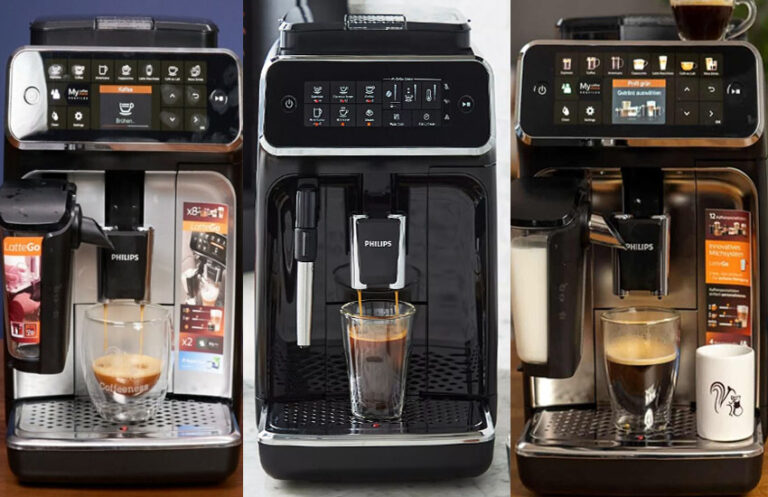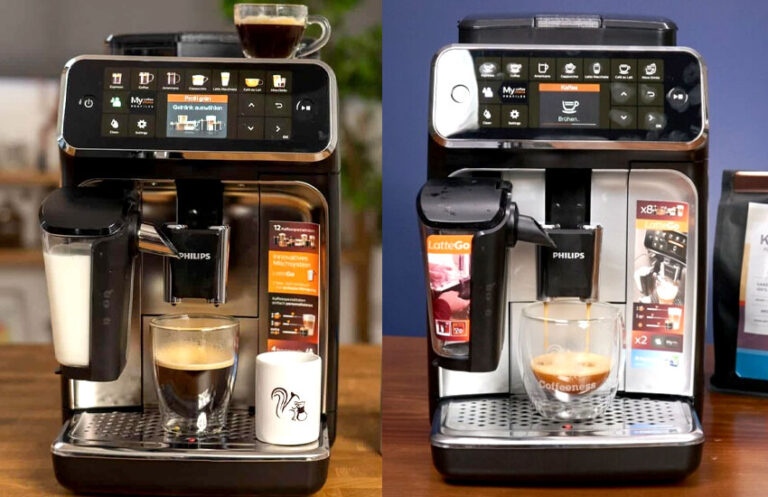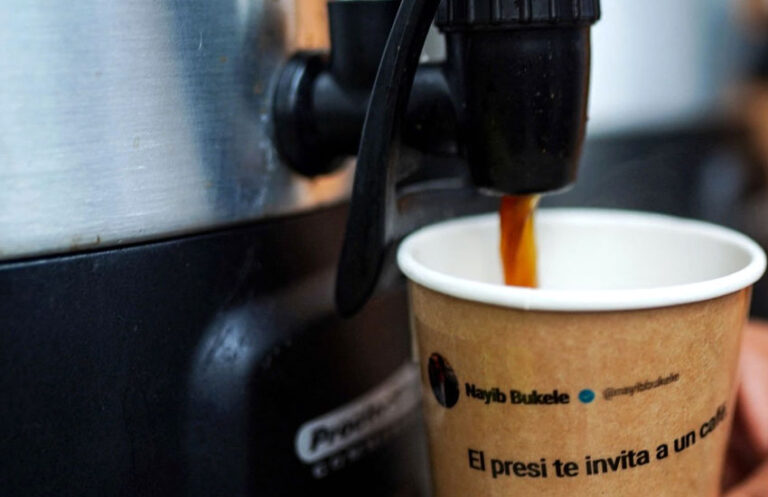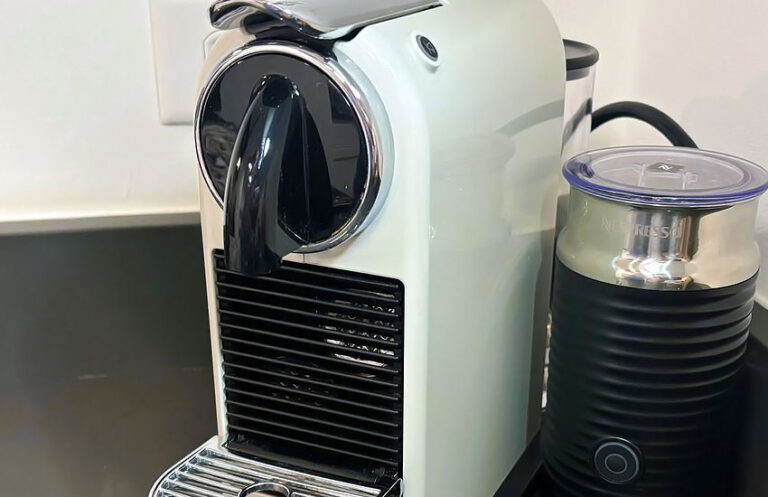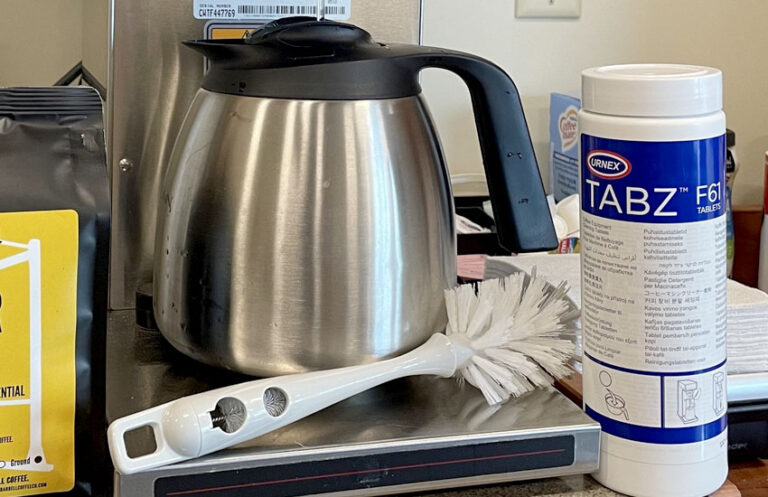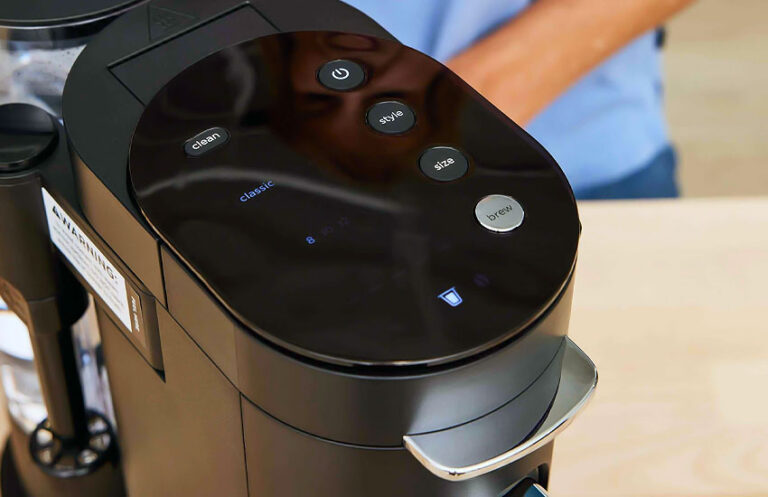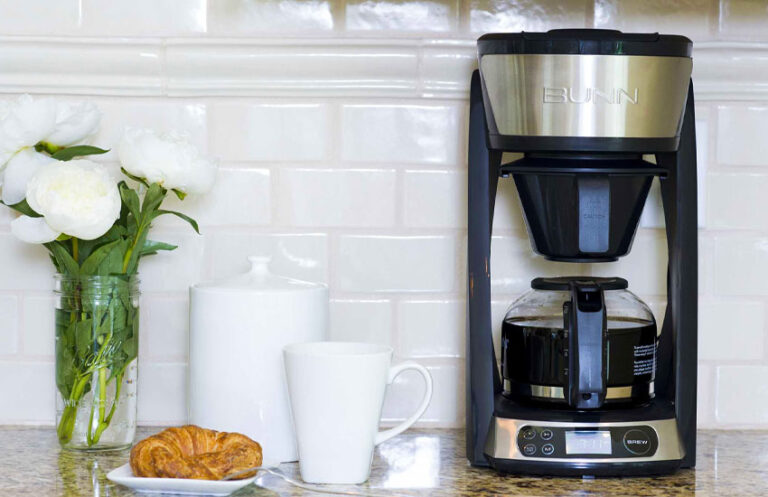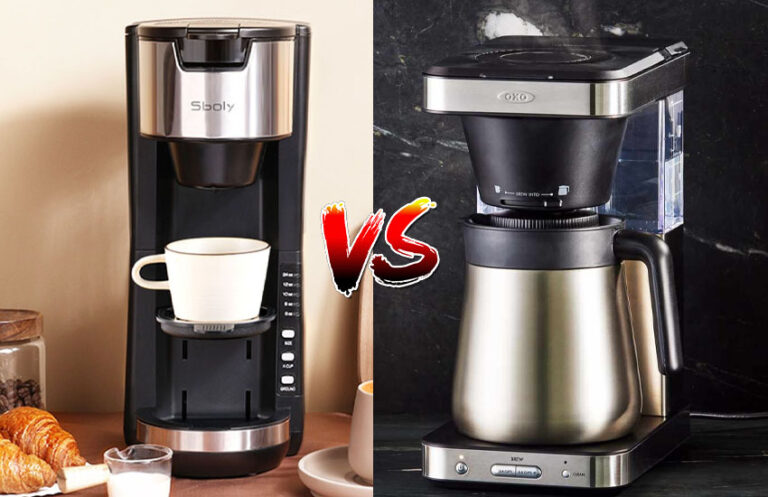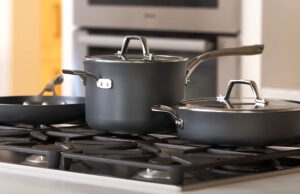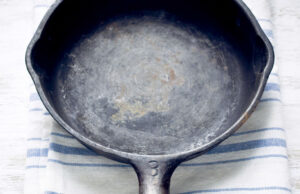As an Amazon Associate, I earn from qualifying purchases at no extra cost to you.
How to Save Money by Making Coffee at Home
Coffee is an essential part of daily life for many of us. It’s the drink that gets us going in the morning, powers us through meetings, and provides that mid-day boost. But, as much as we love our cup of joe, buying coffee from cafes and coffee shops every day can quickly become a costly habit. What if you could enjoy the same great coffee right from the comfort of your own home, without spending a fortune? The good news is that making coffee at home is not only easy, but it can also save you a significant amount of money in the long run. In this guide, we’ll explore how you can save money by making coffee at home, step by step.
Why Should You Make Coffee at Home?
Making coffee at home can be a game-changer when it comes to your finances. Coffee shop drinks, especially specialty drinks like lattes, cappuccinos, and iced coffees, can cost anywhere from $3 to $7 each, and if you’re grabbing one daily, it adds up fast. With a few simple tools and ingredients, you can replicate your favorite café drinks at home for a fraction of the cost.
Beyond just saving money, making coffee at home also gives you full control over the quality of your coffee, the flavor, and how much you brew. You can experiment with different beans, brewing methods, and flavors, tailoring your coffee experience to suit your exact preferences.
Let’s break down exactly how to save money by making coffee at home, starting with understanding the basics.

How to Start Brewing Coffee at Home
Before we dive into the money-saving tips, it’s important to know the basic tools and ingredients you’ll need. While there are a variety of brewing methods, we’ll cover some simple and cost-effective ones to help you get started.
Choose the Right Coffee Beans
The first step to great coffee at home is selecting the right coffee beans. Buying high-quality beans in bulk is more affordable than buying pre-ground coffee or single-serve pods. A bag of whole coffee beans is often cheaper per cup, and they tend to last longer.
When buying coffee beans, consider the type of roast and flavor profile that you prefer. Light roasts have a fruity and bright taste, while dark roasts tend to be bolder and more robust. You can try different types to find what suits you best. Buying beans from local roasters or bulk stores can also help you save money.
Invest in a Good Coffee Grinder
For the freshest cup of coffee, it’s always better to grind your own beans just before brewing. While pre-ground coffee might be convenient, freshly ground beans produce a more flavorful cup. You don’t need to break the bank to get a decent grinder. Manual grinders can be inexpensive and work well for small batches, while electric grinders are faster and more consistent.
When grinding coffee, be sure to match the grind size with your brewing method. For example, espresso requires a fine grind, while French press coffee works best with a coarse grind.
Choose a Brewing Method That Fits Your Budget
There are several brewing methods that can help you save money, and each one comes with its own set of benefits. Here are a few popular, budget-friendly options:
- Drip Coffee Makers: These are inexpensive and easy to use. A simple drip coffee maker can brew a pot of coffee quickly, and you can easily find them for under $50. They are a great option for those who like to brew multiple cups at once.
- French Press: A French press is another affordable option that makes rich, flavorful coffee. You simply add coarse-ground coffee beans and hot water, let it steep, and press the plunger. It’s a great method for people who like their coffee strong.
- Pour-Over: This method involves pouring hot water over ground coffee in a filter. It’s a bit more hands-on but is still very affordable. A pour-over setup usually includes a dripper, filter, and mug, which can all be purchased for a reasonable price.
- Aeropress: If you’re looking for a versatile and budget-friendly brewing method, the Aeropress is a great choice. It’s compact, easy to clean, and makes a smooth cup of coffee.
No matter which method you choose, the key is consistency. Once you find a brewing method you like, stick with it to keep your coffee routine cost-effective.
Invest in Reusable Filters
Instead of purchasing disposable paper filters every month, consider using a reusable filter for your brewing method. For drip coffee makers or pour-over methods, a stainless steel or cloth filter can save you money in the long run. Reusable filters are easy to clean and can last for years, eliminating the need for costly paper filters.
Money-Saving Tips for Making Coffee at Home
Now that you know the essentials, let’s dive into specific strategies for cutting costs while enjoying high-quality coffee at home.
Buy Coffee Beans in Bulk
One of the easiest ways to save money on coffee is by buying beans in bulk. Buying larger quantities of coffee beans can drastically lower the cost per ounce. Many stores, including wholesale suppliers and online marketplaces, offer bulk coffee beans at discounted rates.
When buying in bulk, it’s important to store your coffee beans properly. Keep them in an airtight container away from light and heat to preserve their freshness. You can also divide the beans into smaller portions and freeze them to extend their shelf life.
Skip the Fancy Add-ins
While flavored syrups, whipped cream, and other fancy toppings may seem tempting, they can quickly add to the cost of your coffee. Instead, stick to the basics like milk, sugar, or cinnamon to enhance the flavor without the added expense.
If you enjoy flavored coffee, consider adding your own natural flavorings like vanilla extract, cinnamon, or cocoa powder. These ingredients are affordable and allow you to customize your coffee without splurging on overpriced syrups.
Avoid Single-Serve Pods
Single-serve pods, such as those used in Keurig machines, might seem convenient, but they are not cost-effective in the long run. Pods are often more expensive per cup than regular coffee beans, and they create more waste.
Instead of using pods, opt for a brewing method like drip, French press, or pour-over. If you already own a Keurig, you can purchase reusable K-cups that allow you to use your own ground coffee, saving you money over time.
Brew Larger Quantities
Making a single cup of coffee each time can be wasteful and inefficient. Instead, consider brewing larger batches of coffee. Many coffee makers, like drip machines, allow you to brew multiple cups at once. This saves both time and money because you’re using less energy and coffee per cup.
If you drink coffee throughout the day, consider brewing a full pot in the morning and storing the leftovers in a thermos or coffee carafe. This will keep your coffee hot without needing to brew more throughout the day.
Avoid Expensive Coffee Flavors
While flavored coffee drinks like lattes and cappuccinos are delicious, they can add a significant cost to your daily coffee habit. If you enjoy flavored coffee, make your own at home by adding spices or flavorings to your brew. For example, adding a pinch of cinnamon or nutmeg to your coffee grounds can create a warm, spiced flavor. Similarly, you can experiment with adding cocoa powder or even a splash of vanilla extract to give your coffee a unique twist.
Make Iced Coffee at Home
If you enjoy iced coffee, skip the pricey iced drinks at cafes and make your own at home. Brew a strong cup of coffee and allow it to cool. Once cooled, pour it over ice and add your favorite milk or sweeteners. You can even make a batch of iced coffee in advance and store it in the fridge for a quick pick-me-up throughout the week.
If you prefer cold brew coffee, you can easily make it by steeping coarsely ground coffee beans in cold water for 12 to 24 hours. It’s a simple and inexpensive method that yields a smooth, flavorful coffee.
How to Make Your Coffee Routine More Sustainable
Making coffee at home isn’t just a money-saving option; it’s also a sustainable choice. By brewing your coffee at home, you can reduce waste and your carbon footprint. Here are some tips to make your coffee routine even more eco-friendly.
Choose Eco-Friendly Coffee Beans
When buying coffee beans, look for brands that offer organic, fair-trade, or sustainably sourced coffee. Many companies are committed to reducing the environmental impact of their coffee production, and supporting these brands helps promote more sustainable farming practices.
Use Reusable Coffee Cups and Mugs
If you frequently grab coffee from a café, you might use disposable cups and lids that contribute to waste. To reduce this, invest in a reusable coffee mug or tumbler. Many coffee shops will even give you a discount if you bring your own cup, which can add up over time.
Reduce Waste with Reusable Filters
As mentioned earlier, reusable coffee filters are a great investment for brewing methods like drip coffee or pour-over. Not only do they save you money, but they also reduce waste by eliminating the need for disposable paper filters.
Compost Used Coffee Grounds
Coffee grounds can be composted and used to enrich your garden. If you drink coffee daily, you can collect your used coffee grounds and add them to your compost bin. This is an easy and sustainable way to reuse what might otherwise be thrown away.
I hope this guide has given you some valuable insights into how you can save money by making coffee at home. With the right tools, ingredients, and brewing methods, you can enjoy high-quality coffee without the hefty price tag. By buying coffee in bulk, brewing larger quantities, and opting for reusable filters, you can significantly reduce the cost of your daily caffeine fix while still enjoying the perfect cup of coffee. Start making your coffee at home today and watch your savings grow!
Are These Questions in Your Mind?
Is it cheaper to make coffee at home or buy it from a coffee shop?
It is definitely cheaper to make coffee at home. The cost of a cup of coffee at home is typically much lower compared to the price you pay at a coffee shop, especially if you buy coffee beans in bulk and avoid expensive add-ins.
Can I make good coffee without an expensive machine?
Yes, you can make excellent coffee without an expensive machine. Simple brewing methods like French press, pour-over, or AeroPress can produce great-tasting coffee without requiring a costly machine.
Do I need to buy a coffee grinder?
While not absolutely necessary, a coffee grinder is highly recommended if you want to enjoy the freshest coffee. Grinding your own beans just before brewing enhances the flavor and aroma of the coffee, giving you a better experience.
Is it better to buy ground coffee or whole beans?
Whole beans are generally better than ground coffee because they stay fresher for longer. Grinding your own coffee beans just before brewing ensures a richer and more flavorful cup.
Can I reuse coffee grounds?
Yes, you can reuse coffee grounds, although the second brew will be weaker. However, you can use used coffee grounds for composting, as a natural deodorizer, or even in beauty treatments.
Do I need to buy fancy milk or creamers?
Fancy milk and creamers aren’t necessary. You can use regular milk, almond milk, oat milk, or even simple sugar and spices to enhance the flavor of your coffee without the extra cost of flavored creamers.
Can I make iced coffee at home?
Yes, you can make iced coffee at home easily. Brew your coffee, cool it down, and pour it over ice, or make cold brew coffee for a smoother taste.
Is it worth investing in a coffee maker?
If you drink coffee regularly, investing in a coffee maker can be worth it. Even basic coffee makers can help you brew coffee efficiently, saving you time and money compared to buying coffee from cafes.
Do I need to buy fancy syrups to flavor my coffee?
No, you can flavor your coffee naturally by adding ingredients like cinnamon, vanilla extract, or cocoa powder. These options are often more affordable and healthier than store-bought syrups.
Can I make coffee stronger without spending more money?
Yes, you can make your coffee stronger by adjusting the amount of coffee grounds you use or experimenting with brewing methods.

